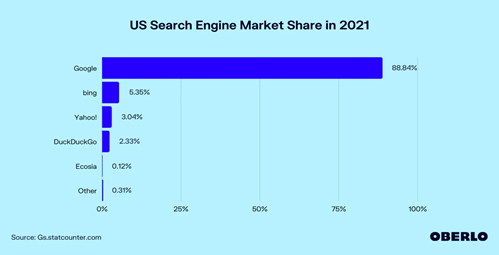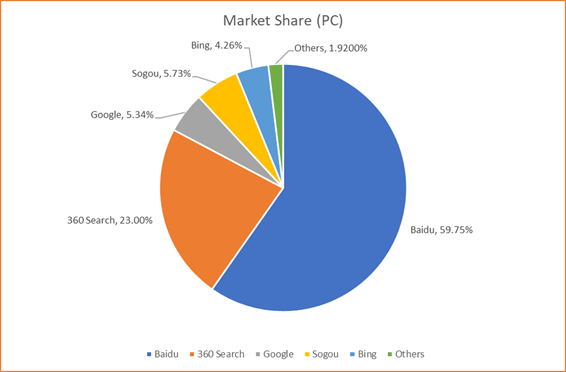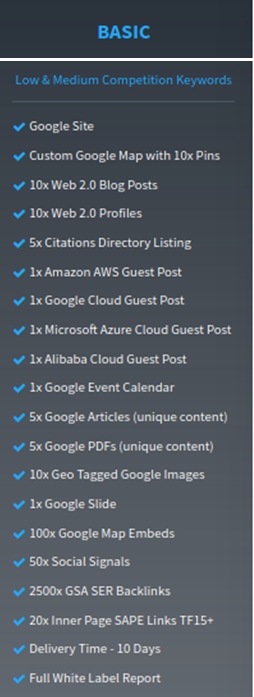Google Entity Stacking
Google Entity Stacking (or authority) stacking can be a way to game Google’s ranking system by linking your sites to many Google-hosted services. Generally, Google holds an effective monopoly over the search market and an oligopoly over the web services market. One key reason it is necessary to implement entity stacking is that it helps increase website rankings.
Entity stacking does this by linking your website to Google services. In turn, Google prioritizes (or at the very least does not penalize) websites when evaluating them to prioritize their search results. By entity stacking, it is possible to gain a slight advantage when curry viewers via search results.
Entity stacking is one of the main tools used in SEO (search engine optimization) and one of the more marginal strategies. It directly relies on Google’s conflict of interest between its web services and search engine.
What is SEO?
Search engine optimization is creating websites that are looked at favorably by users and web crawlers. Web crawlers are programs that “crawl” through all the web pages they can find and evaluate their content and quality. This presents users with the best possible match to their content.
While it seems strange to consider all SEO operations, it is essential to note that end-users will search for web pages. Even if a search engine serves up irrelevant web pages often, they are unlikely to be selected. Therefore, getting your webpage to the right users is crucial.
Types of SEO
Multiple search engine optimization strategies range from basic web design improvements to URL naming and page optimization. Simple search engine optimizations revolve around making web pages more likely to be searched by humans. For example, someone would be more likely to search for “cats” than its scientific name, Felis Catus. Therefore, using “cats,” at least as a keyword, would be good.
More mechanically-inclined forms of SEO revolve around web crawlers. Their job is to judge which websites are the “best.” Search engines cannot afford to search every page. Instead, they have to rely on heuristics to guess how legitimate a page is in using relatively little information. Therefore, it is possible to use this to create an attractive-looking web page that bots judge favorably.
Impact of SEO
Because search engine optimization is not directly based on the visual webpage and does not necessarily increase user interest. Search engines rank web pages favorably, and web crawlers do not directly translate them into web pages that people want to view.
What is Google Entity Stacking?
Google Entity stacking is a form of search engine optimization, and its specific implementation gives trust to their web services. It offers a wide range of web services, such as its popular Google Docs suite, Google Maps web application, and mail and bulletin board services.
Since Google implicitly trusts its websites to be legitimate (since it owns them), Google is more likely to give a web page a favorable or fair ranking. By doing so, entity-stacked websites are more likely to be listed in Google search results, which are the most common way for Internet users to find new web pages.
Conflict of Interest?
The more legally minded people reading this may find it suspicious that linking to Google services to boost its ranking is a valid strategy. Indeed, it is a potential conflict of interest wherein Google’s strong market position in the search market forces an anti-competitive preference for an unrelated product in a different part of Google’s product portfolio.
It is worth noting that despite other web companies having online services and browsers, no other platform has a similar entity stacking technique. But it’s theoretically possible for “Microsoft Entity Stacking” due to comparable products as Google. However, their weaker market position precludes such a strategy from making sense.
It is possible that in the future, Google will be forced not to treat its services preferentially, either in the interest of avoiding the appearance of antitrust or because this change would completely invalidate the entity stacking method from its core principles. As a result, users should not lean too heavily on the potential benefits of entity stacking to advance their web page’s traffic rankings.
Stacking Methods
Unsurprisingly, the implementation route for Entity stacking relies on creating as many Google entities as possible for the web crawler to find. As a result, Google Entity stacking depends on providing as many links to Google properties (e.g., Google Sheets or Google Maps) as possible.
The Google web crawler will identify the website as linking itself to a legitimate website by directly connecting to Google websites. This will accomplish the preferential treatment sought by any search engine optimization technique.
While it is possible to rely on indirect links (since web crawlers take more than direct links into account), these are often far less effective than direct links, which are weighted more heavily. However, remember that web crawlers consider more than the direct links provided to it.
Compared to other SEO methods
Google Entity stacking, of course, is only particularly effective on Google’s search engine and not on other web search platforms such as Bing or DDG. Additionally, entity stacking is less effective than general SEO methods at making the webpage more presentable to users. Typical search engine optimization techniques are closer to good design practices than exploiting the web crawlers’ specific biases.
Efficacy- vs. Platform Agnostic
Implementing a Google-hosted sphere of links is, of course, only especially effective when Google is looking at your website. This is not a massive concern in services in the United States or Europe, where Google is the most dominant web browser. However, it does mean that the sizable minority of users who use Bing or another platform will not receive the benefits of Google entity-type SEO methods.

https://www.oberlo.com/statistics/search-engine-market-share
As a quick note, however, it is crucial to recognize that Google does not have an overwhelming majority, or even a significant market share, in all markets. Most important to this discussion is China, where Google is not even the second most common web browser:

https://www.theegg.com/seo/china/chinese-search-engine-market-share-2018/
While China is an extreme case due to its nationalization of web browsing, it is important to note specific regional trends when making these decisions. As the chart indicates, Google holds a mere 5% control over the Chinese search market. Naturally, if one targets a website for the Chinese market, it will be ineffective to attempt Google entity stacking.
– vs. Black Hat
It is probably fairest to consider Google Entity stacking a “gray hat” technique– neither a method officially endorsed by Google nor a specifically discouraged technique considered baldly exploitative of the web crawler algorithm. Google is unlikely to approve entity stacking for legal reasons, but it is not averse to extra traffic to its properties. As a result, entity stacking is more likely to work as a long-term technique than “black hat” techniques actively being combated by search engine providers.
Implementation – Making it Organic.
It is essential to ensure that a prospective web developer does not make it too obvious to include links to Google properties in implementing search engine optimization via Google entity stacking. To do this, one can try to incorporate Google links in the most organic, natural way possible. Good examples of naturally linked places without looking improper are spreadsheets (clumsy to inline) and map links (as most websites won’t bother to embed their maps). Additionally, it may be feasible to add Google links in footnotes or out-of-the-way locations that do not scream their name out to users.
Keeping it Professional
Avoid making it appear that the Google links are forced into the webpage for reasons arbitrary to the user. Keeping links reserved in proportion to the website’s professionalism is also important. Many users will want to ensure their website’s front page is as professional as possible, and linking to a text document might be seen as unprofessional.
Entity stacking services
Like any other service in any industry, Google entity stacking is available as a paid service for those who do not want to do it themselves. While it is not the purpose of this article to make value judgments, it is at least possible to get a glimpse of what a typical entity stack looks like:
Looking at this, we can see that a whole range of methods to achieve Google linking include:
- Web 2.0 posts,
- Google Cloud posts,
- Calendar,
- Google Articles,
- PDFs,
- Google Images,
- Slides, and Google Maps.
For good measure, presumably, a couple of other primary services are linked as well. This may not make Google’s crawler suspicious that only Google is being linked to.
By linking to so many different services, we can see that the typical Google entity stack relies on piling on credibility by simply having many links, even if they don’t necessarily make sense. Of course, because Google’s web crawler isn’t very smart. It can’t be because it has to be very quick for each page.
Overall Impact
Google Entity stacking makes the website more appealing to users visiting the webpage. Therefore it is not adequate to rely on entity stacking alone to drive traffic. An already well-designed website trying to squeeze a little more traffic out of its domain can benefit from entity stacking.
In contrast, however, a slight boost in Google rankings will do little to nothing to aid a website owner when its design itself lacks. Entity stacking offers a marginal change that attempts to squeeze as much as possible out of a website when other attempts to drive increased traffic are insufficient.
However, it is not a standalone solution to create a popular web page, so various online marketing strategies are required—for example, Google My Business and SEO.

